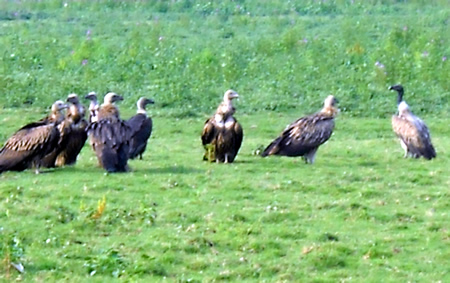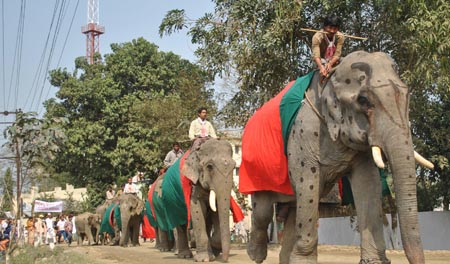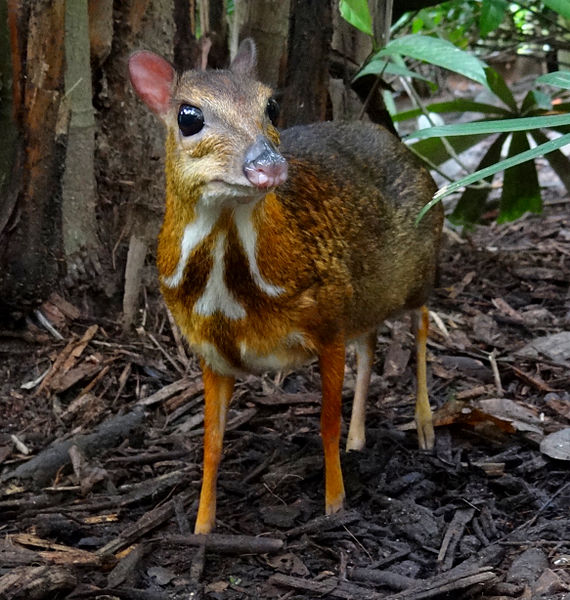TRAVEL TALE: Tara Harrison, Destinations Editor of Travel Weekly Magazine, Australia, recently visited the Nagarhole National Park in southern India to see a wild tiger. But is it that easy to catch a glimpse of the mega predator in its jungle territory? Read the guest post, to find what the adventurer witnessed on her maiden tiger safari.
I don’t know what the tiger will do next. Its paw is as wide and round as a coconut, with claws of terrifying proportions. This is the closest I have ever come to a wild tiger and it follows a three-hour pursuit through the Indian jungle.
It began at 5am on the first day of winter in the country’s south. A dense mist shrouds the land and chills the cheek. Dragonflies emerge from the air and tree bark looks like crocodile skin. The air is a vapour of lime, pepper and honey. Flowers that have stewed during monsoon are opening.
And then the air turns bitter.
“Can you smell that?” safari guide Venki asks. “It’s the smell of tiger urine.”
As we venture further into the jungle, the condensation thickens and catches on spiderwebs. Like an illusion, the more you stare at the ground and horizon, the more webs appear.
I’m entranced enough to be startled when Venki abruptly shuts off the Jeep’s engine and whispers an instruction to stare at a spotted deer.
Its white-streaked tail is erect, providing a target for the herd to follow. They have sensed danger and their hard hooves seem to tiptoe through the forest grass as precisely as stilt-walkers.
I scan the undergrowth for orange, anticipating an ambush. All is silent aside from the air’s moisture; it drips off umbrella leaves with the weight of ice. After a few minutes the deer’s tail slackens back to normal, in a mirror to my breathing pattern.
It’s time to move on, but Venki is ever-optimistic.
“Every sighting has a story,” he tells me.
Nagarhole National Park has the highest prey density in India, so it’s no surprise that spotted deer are the most frequently sighted animals. Where there’s prey, there are predators. There are up to 90 leopards and some 70 tigers, with one tiger inhabiting every ten square kilometres on average.
This is, after all, the second best place to see tigers in the world. And while they will never run from humans and vehicles, they are shy and pad off slowly.
“We have a video of a tiger who emerges from the undergrowth, sees us on safari and then slowly reverses back,” Venki says.
They weren’t always so shy. Nagarhole was home to the Maharajah’s hunting lodge and in the 1800s he shot a tiger at close range from his own balcony. It is human encroachment and hunting that has caused tigers to be as shy as they are today.
I can’t help but think that we may well have passed a tiger that stealthily crept back under cover.
In the meantime, other animals are more forthcoming. I see animals endemic to South India such as the giant squirrel – not quite giant but a lot bigger than your average London park version.
Still, it’s no tiger. Venki keeps us motivated by regaling us with character traits and tiger anecdotes. Apparently the big cats favour walking on the road tracks forged by vehicles like ours to protect their paws and stay clean. Not dissimilar from my own cat at home then, who cleans every patch anyone pats.
The mist is starting to distil now as the sun takes precedence. As the heat rises the chances of a tiger sighting decrease exponentially.
Sensing the urgency, the driver takes an impromptu turn down an overgrown road.
“I haven’t driven down here since monsoon, but I have a good feeling, so let’s go,” Venki says.
Five minutes into the bladder-busting route, we halt. I can see nothing – albeit the ubiquitous spotted deer. I realise my error – I am looking from the horizon up, when all the action is at tyre level.
Red-brown mud has solidified like a mask around a chunky paw print. There’s no mistaking it – a tiger has made its mark and true to form, stuck to the cleaner vehicle path. It’s a female, as males have wider gaps between their paw pads.
I never found out what she did next. Once again true to form, she eluded us. But a tiger’s paw used to be a trophy for hunters, and while my shot was through a lens, I’m claiming it as my own scalp.
– Tara Harrison
This post has been re-published with permission from Travel Weekly . Find more interesting stories by the author here
More Related Stories,
Memoirs of a Green Hiker alone the Goecha La Pass
Image via cc/Flickr by NH53, Batterjob32









One thought on “How to Stalk a Tiger”